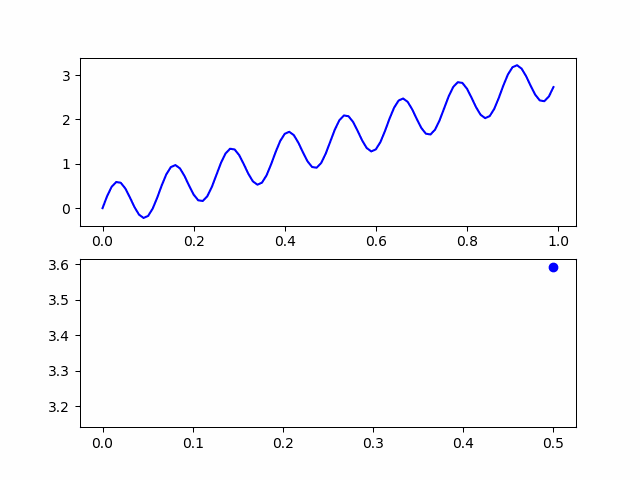Introduction
Today, I will implement visualization of Variational method. Variational method is used when we want to minimize functional. functional is function of function. Please look at [1],[2],[3],[5] and [6].
Overview
Reference
[1]http://www2.kaiyodai.ac.jp/~takenawa/optimization/resume10-4.pdf
[2]http://hooktail.sub.jp/mathInPhys/brachisto/
[3]http://eman-physics.net/math/differential21.html
[4]http://bicycle1885.hatenablog.com/entry/2014/02/14/023734
[5]http://www2.kaiyodai.ac.jp/~yoshi-s/Lectures/Optimization/2013/lecture_6.pdf
[6]http://www.qi.mp.es.osaka-u.ac.jp/personal/imoto/index-j/jugyou/Kaiseki170427.pdf
Today, I will implement visualization of Variational method. Variational method is used when we want to minimize functional. functional is function of function. Please look at [1],[2],[3],[5] and [6].
Overview
- formula
- Implementation
- Visualization
Formula
I used following formula.
$$F(x) = \sqrt{1+(\frac{du}{dx}(x))^2}$$
$$l(u) = \int_{0}^{1} \sqrt{1+(\frac{du}{dx}(x))^2} dx$$
l(u) is the length of the u(x).
I want to minimize l(u) subject to $u(0)=a$ and $u(1)=b$.
u minimizing I(u) is
$$u(x) = (b-a)x+a$$
This u is line from (0,a) to (1,b).
Because l(u) is the length of the u(x), We found out that u minimizing l(u) is line.
Please look [5] to calculate of variational method.
Implementation
I implement visualization of variational method to check difference of optimize curve and other curve.
Let $u_A$ is
$$u_A = (b-a)x+a + A sin(8t)$$
$A sin(8t)$ increase the distance from $u$. $A \in [0,0.5]$.
If $A=0$, u is optimization curve.
I publish code at github.
Visualization
The up image is $u_A(x)$. The under image is $l(u_A)$.
We found out that the closer line $u_A(x)$ is, the smaller $l(u_A)$.
Reference
[1]http://www2.kaiyodai.ac.jp/~takenawa/optimization/resume10-4.pdf
[2]http://hooktail.sub.jp/mathInPhys/brachisto/
[3]http://eman-physics.net/math/differential21.html
[4]http://bicycle1885.hatenablog.com/entry/2014/02/14/023734
[5]http://www2.kaiyodai.ac.jp/~yoshi-s/Lectures/Optimization/2013/lecture_6.pdf
[6]http://www.qi.mp.es.osaka-u.ac.jp/personal/imoto/index-j/jugyou/Kaiseki170427.pdf

コメント
コメントを投稿